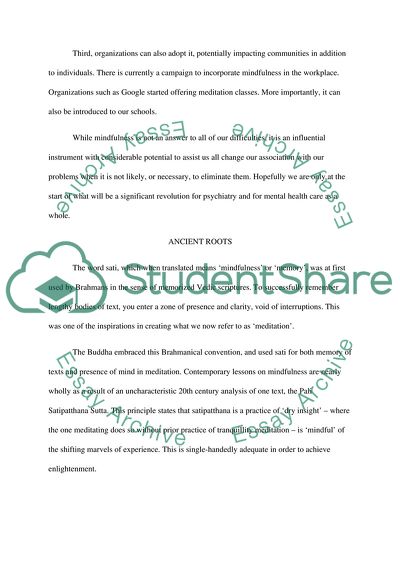Cite this document
(Understanding Mindfulness Research Paper Example | Topics and Well Written Essays - 2000 words, n.d.)
Understanding Mindfulness Research Paper Example | Topics and Well Written Essays - 2000 words. https://studentshare.org/health-sciences-medicine/1820904-mindfulness-and-mental-health-evidence-based-mindfulness
Understanding Mindfulness Research Paper Example | Topics and Well Written Essays - 2000 words. https://studentshare.org/health-sciences-medicine/1820904-mindfulness-and-mental-health-evidence-based-mindfulness
(Understanding Mindfulness Research Paper Example | Topics and Well Written Essays - 2000 Words)
Understanding Mindfulness Research Paper Example | Topics and Well Written Essays - 2000 Words. https://studentshare.org/health-sciences-medicine/1820904-mindfulness-and-mental-health-evidence-based-mindfulness.
Understanding Mindfulness Research Paper Example | Topics and Well Written Essays - 2000 Words. https://studentshare.org/health-sciences-medicine/1820904-mindfulness-and-mental-health-evidence-based-mindfulness.
“Understanding Mindfulness Research Paper Example | Topics and Well Written Essays - 2000 Words”. https://studentshare.org/health-sciences-medicine/1820904-mindfulness-and-mental-health-evidence-based-mindfulness.


